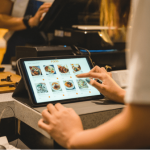China was the first country to be hit by COVID-19, and is now progressively moving toward recovery.
NB: This is an article from OTA Insight
Domestic travel has begun and during the “Wu-yi” and “Golden week” holidays some local hotels were able to achieve a high percentage of occupancy. We wanted to understand how China hoteliers feel about the current market, how they are strategising their pricing and their distribution strategy. To answer these questions, OTA Insight surveyed China hoteliers across the country.
Survey participants by property classification
We invited hoteliers of 3-star to 5-star properties to join the survey. At 67%, 5-star hotels were most represented. 26% of respondents operate in the 4-star hotels , followed by 7% in 3-star hotels
Subscribe to our weekly newsletter and stay up to date
Key segments and dependence on international travellers

61% of survey participants reported that 0-20% of their guests were international, 22% of respondents claim that only 21-40% of their guests come from abroad and another 10% state that between 41-60% of their visitors are from overseas. Since these properties rely more on domestic business and are well established in their local market, they also stand to recover more quickly.
On the other side are the 5% of contributors who have 61-80% international guests and only 2% who rely almost entirely on inbound travellers. They will likely need to revisit their guest mix and target segments more to ensure their post-COVID success and be creative in promoting new products and review the BAR rate to match local expectations.
When asked which segments had been most important before the crisis, 77% named corporate contracted business, followed by third-party promo rates (48%), while corporate MICE came in third place with 44%. However, during COVID-19, hoteliers are increasingly investing in third-party promo rates (66%), which are heavily targeting domestic travel and corporate contracts ( 52%), as domestic business travelling was the first segment that has moved toward recovery. Direct Booking (39%) became an important source for hoteliers to reduce third- party commission to ensure there is a business mix to balance out the budget.
Performance monitoring during the crisis

Since the COVID-19 crisis is unlike anything the hospitality industry has seen, many hoteliers have found it challenging to measure their performance and predict future demand based on historical data.
In these unprecedented times that challenge standard reporting procedures, 69% of respondents still use past data to track recovery, performance and pick-up. Instead of comparing year-on-year data, most revenue managers have switched to week-over-week and month-over-month analyses to determine if and how they are recovering as the situation develops.
When predicting upcoming demand in their markets, we’ve noticed an average percentage from different sources, providing a comprehensive overview. 73% of hotelier respondents said they search the volume from OTA/Metasearch extranet first, 71% said they examine competitor pricing changes. Additionally, 70% review for market occupancy and 67% pay focus on holidays and events.
By comparison, only 28% look at inbound/outbound market statistics and inbound flight data ( 23%). This may be due to the international border, which hasn’t been lifted yet and currently receives little traffic (23%) because the majority of international travelers book through directly.
Revisiting KPIs post-COVID-19
With the local market demand shifting in China, reviewing key performance indicators (KPIs) may be necessary for hotels to measure their performance more accurately in this unexpected situation. Yet, only 44% of respondents say they have done so.
The KPIs which most properties have reviewed include markers such as: RevPAR, RGI, ADR and occupancy, as well as total revenue and the goals for market segments. Consider integrating with Revenue Insight, a BI tool for hotels to make quick analytics and also unleash the potential in revenue, which could help to make a quick decision at this period of time where the market is in recovery stage and acting fast to gain market share back at the soonest time.
Pricing strategy and positioning post-COVID-19
Besides rethinking KPIs, pricing strategy and positioning are also an important area to re-evaluate. However, only 46% of revenue managers say they will reconsider which hotels they compare to post COVID-19. The approach to price positioning has also changed in general – some hoteliers have lowered prices during the COVID-19 recovery in China. While we’ve seen an increase of 5%, the percentage of the hotels that chose to lower the room rate for more than -20% compared to the competitors.
In terms of pricing, only 38% of survey participants say they have changed or will change how they use advance purchase rates (APR). This can be attributed to market uncertainty, with travellers currently preferring to make last-minutes bookings. The promotion strategy for these hoteliers was to shorten the lead time booking to 3 days before, discounting 10-15% for mass volume bookings and loosening the cancellation policy.
An additional consideration for hoteliers is the impact COVID-19 will have on efforts to drive direct bookings: 78% believe the crisis has setback direct bookings. As previously mentioned, this has been impacted by international travellers, who often make these direct bookings.
The importance of rate parity

Maintaining rate parity is crucial for a hotels aiming to increase direct bookings. Survey respondents echoed this sentiment, when they were asked to grade the importance of rate parity on a scale of one to ten, ten being “very important, the average rating was 8.3, with 43% voting ten, 10% voting nine and 23% voting eight.
The result was surprising: rate parity is crucial, due to hoteliers relying more on domestic OTA channels to generate cash flow from local travellers. These OTA channels worked with hoteliers to launch member rate promotions and new products combinations – for example a room with F&B package and meeting room package in smaller scale. Monitoring key OTAs and metasearch performance to avoid the discrepancy is crucial to avoid parity issues that will subsequently cause the loss in revenue. However, this can be solved and done automatically with Rate Insight which provides a consolidated view to all OTAs in one page.
Many hotels are still planning on using OTA and FIT levers to help their recovery process. 91% want to implement OTA extranet promotions while 61% want to use FIT advance purchase promo. OTA loyalty programs rank third with 48%. And they heavily reduce on wholesales prepaid deals (44%) and over-commission to gain visibility ( 26%) because they only have limited budget can be spent during this COVID-19 period.
Forward-looking strategies
Domestic travel in China is slowly recovering. Hoteliers are hoping for the complete reopening of borders and the return of international guests – as well as permission to host large events once again. In order to measure how recovery is progressing for their property, survey respondents most frequently mentioned looking at increases in flights, group bookings and and conference activities. When asked which markets they look at most closely as a model for their own recovery, the majority of hoteliers refer to first- tier cities in their provinces, for example: Shanghai, Guangzhou and Hong Kong.
When the guest mix changes, an increase in marketing spend can help build awareness among the new target audience. Yet with hotels experiencing drastic revenue drops, it’s surprising that 35% of respondents state they will increase their marketing spend to some degree, 36% want to keep it the same, and only 29% plan to reduce marketing. Looking to understand these new market conditions with forward looking data? Be sure to check out our latest product, Market Insight.
The China market has shown strong signs of recovery, creating a sense of hope and optimism among hoteliers: 22% of respondents think their markets will have recovered by Q4, 2020. However, the majority of revenue managers see a proper recovery taking place in 2021. 34% believe a full recovery won’t occur until mid to late 2021, while 24% believe the full recovery will happen in the first half of the new year. 7% estimate they will need to wait until 2022, while 3% look to 2023 and beyond.
With positive developments in China and the majority of hoteliers sharing a somewhat positive outlook, we have good reason to believe the hospitality industry will keep going strong on its way to a full recovery.

Read more articles from OTA Insight
The post China Market: How Hoteliers are Preparing for Recovery appeared first on Revenue Hub.































